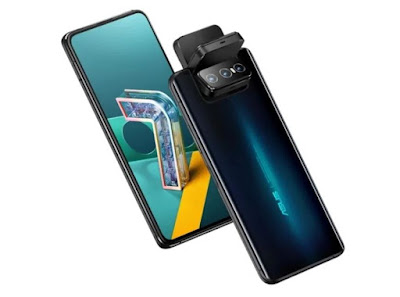It seems that this makes the energy pull so big, that ASUS still continues the design to the ASUS Zenfone 7 series. Yep, this year ASUS released 2 variants like 2 years later, although the difference is not too far away. Featured cameras, currently the number of sensors has increased by one, with a uniform mechanism.
Increments Bring to ASUS Zenfone 7 Series
Yes, currently the rotating or flip camera system has a total of 3 sensors, making it the first smartphone to have 3 front cameras (when rotated 180 degrees forward). With the increasing number of sensors, ASUS continues to strengthen its mechanism so that it is always durable for use, especially with 100 open and close times for up to 5 years.
Currently the motor used on the ASUS Zenfone 7 series camera is smaller, but shares 2 times the torque. The connection to the main body is also improved. When opened, the camera can hold objects weighing up to 35 kg. It doesn't have to be proven, of course, just like data if it's currently much more robust.
The configuration of the three camera sensors is also quite interesting. The main sensor has a resolution of 64MP, uses Sony IMX686 with OIS and supports video recording of 8K 30fps, 4K 120fps to HDR video. Then there's an 8MP telephoto 3x optical zoom sensor, which also comes with OIS.
 |
| ASUS Zenfone 7 Series |
The third sensor is a 12MP ultra wide-angle Sony IMX363. This sensor has Dual Pixel autofocus expertise, also doubles up as a 4cm macro camera. Supporting 4K recording, this sensor is used for the HyperSteady Video feature, suitable for vlogging with a wide viewing angle. To differentiate between the two variants, the non-Pro ASUS Zenfone 7 comes with 3 cameras without OIS.
Not only the camera zone, the screen also received a significant increase. Using an AMOLED panel from Samsung, ASUS is working with Pixelworks to perfect its screen reproduction to accurately match sRGB or DCI-P3 standards. The dimensions are 6.67 inches, with FHD + resolution without any problem with the camera, aka full-screen.
Layered with Gorilla Glass 6, another increase is a 90Hz refresh rate with a touch sampling rate of up to 200Hz. Combined with the Snapdragon 865 Plus chipset in the Pro variant (as well as Snapdragon 865 for the non-Pro variant), using the ASUS Zenfone 7 series will feel very lightning.
ASUS Zenfone 7 Pro will appear with RAM options up to 8GB with UFS 3.1 256GB storage memory, while the usual variants start at 6GB / 128GB. Both variants carry a triple slot system (2 SIM cards + microSD card), and of course, have supported the 5G network of the chipset they carry.
Even though you have used an AMOLED panel, the fingerprint sensor is embedded next to the power button. The capacity of the 5,000 mAh battery that is carried can be quickly charged with 30W fast charging. A mixture of aluminum and glass makes it quite heavy, a total of 230 grams.



0 Comments